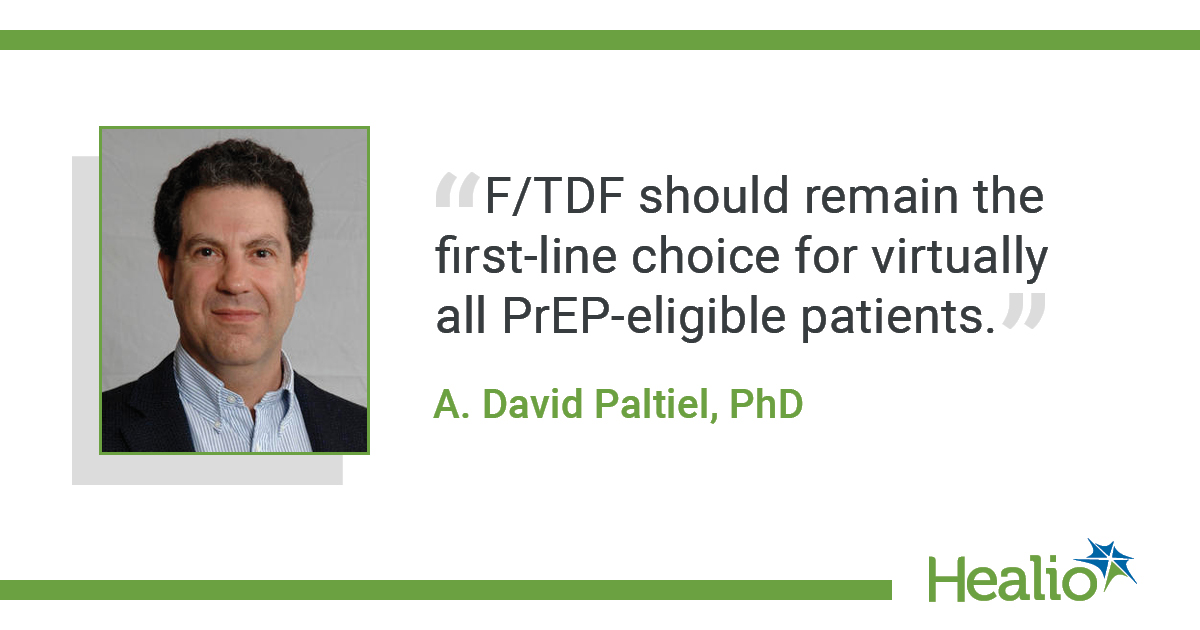Generic PrEP may present ‘golden opportunity’ for affordability

Recommending the newly approved tenofovir alafenamide-emtricitabine, or F/TAF, for HIV prevention over a generic version of tenofovir disoproxil fumarate-emtricitabine, or F/TDF, that will be available later this year will not be cost-effective, even in patients at highest risk for adverse bone and renal outcomes from the old medication, according to findings from a cost-effectiveness study presented CROI and published simultaneously in Annals of Internal Medicine.
Researchers found that a markup for F/TAF of up to $370 over the price of generic F/TDF — $8,300 — may be justifiable, based on the differences between the two agents in regard to toxicity. As a result, given a generic option, the current price of F/TAF ($16,600 per year) would need to decrease by over $7,900 per year for F/TAF to meet “generally accepted standards of societal value.”
The FDA approved F/TAF in October of last year as a second option for pre-exposure prophylaxis (PrEP) in at-risk adults and adolescents. Gilead Sciences announced in May of this year that a generic alternative to F/TDF will be available in 2020 as the medication comes off patent.
“F/TDF should remain the first-line choice for virtually all ,” A. David Paltiel, PhD, of health policy and management at Yale School of Public Health’s public health modeling unit, told Healio. “The manufacturer has launched an aggressive campaign to undermine confidence in F/TDF and to encourage doctors to switch their patients to F/TAF before the patent on F/TDF expires. We find that the potential safety benefits of F/TAF are too small, too uncertain and way too expensive to justify a general switch.”
Paltiel and colleagues reviewed published to evaluate the of F/TAF for PrEP and identify the highest possible price premium for branded F/TAF over generic F/TDF. Paltiel told Healio that they intentionally overstated adverse economic and clinical outcomes of generic F/TDF by inflating rates of kidney and bone disease incidence, assuming all fractures and that cases of kidney disease would be irreversible and require dialysis.
The current population of MSM taking PrEP, when stratified by age, ranges from almost 49,500 individuals aged 24 to 34 years to nearly 10,000 among MSM older than 55 years.

After accounting for age-stratified risk and absolute numbers of patients, Paltiel and colleagues found that, over the 5-year period analyzed, compared with F/TDF, F/TAF would prevent 2,101 fractures and 25 cases of end-stage renal disease for the 123,610 MSM taking PrEP, with an incremental cost-effectiveness ratio (ICER) of $7 million per quality-adjusted life years (QALY). At a 50% discount for generic F/TDF ($83,000 per year) and a societal willingness to pay up to $100,000 per QALY, the maximum fair price for F/TAF was $8,670 per year. In adults aged 55 years and older, the ICER for F/TAF was more than $3 million per QALY and the maximum permissible fair price for F/TAF was $8,970 per year.
“Although clinical decision-making incorporates many factors in addition to cost and cost-effectiveness, these additions are welcome,” Carlos del Rio, MD, FIDSA, executive associate dean at Emory University School of Medicine, and Wendy S. Armstrong, MD, of Emory University School of Medicine, wrote in an accompanying editorial. “Walensky and colleagues’ study highlights the outsized cost of F/TAF compared with potential clinical benefits once F/TDF is generic and makes it clear that shifting to F/TAF as first-line PrEP for all cannot be universally recommended.”
Paltiel noted that the researchers were surprised at how “very little” additional clinical benefit F/TAF over F/TDF, as well as how small the fair price markup was for F/TAF over generic F/TDF.
“The imminent availability of generic F/TDF presents you with a golden opportunity to make affordable PrEP available to your most vulnerable patients,” Paltiel said. “The manufacturer’s aggressive marketing campaign could succeed in driving out the generic competition, stalling PrEP expansion and causing more avoidable HIV transmissions than it prevents.” – by Eamon Dreisbach
Disclosure: Paltiel reports grants from National Institute on Drug Abuse and NIMH during the conduct of the study. Please see the study for the other authors’ relevant financial disclosures.


